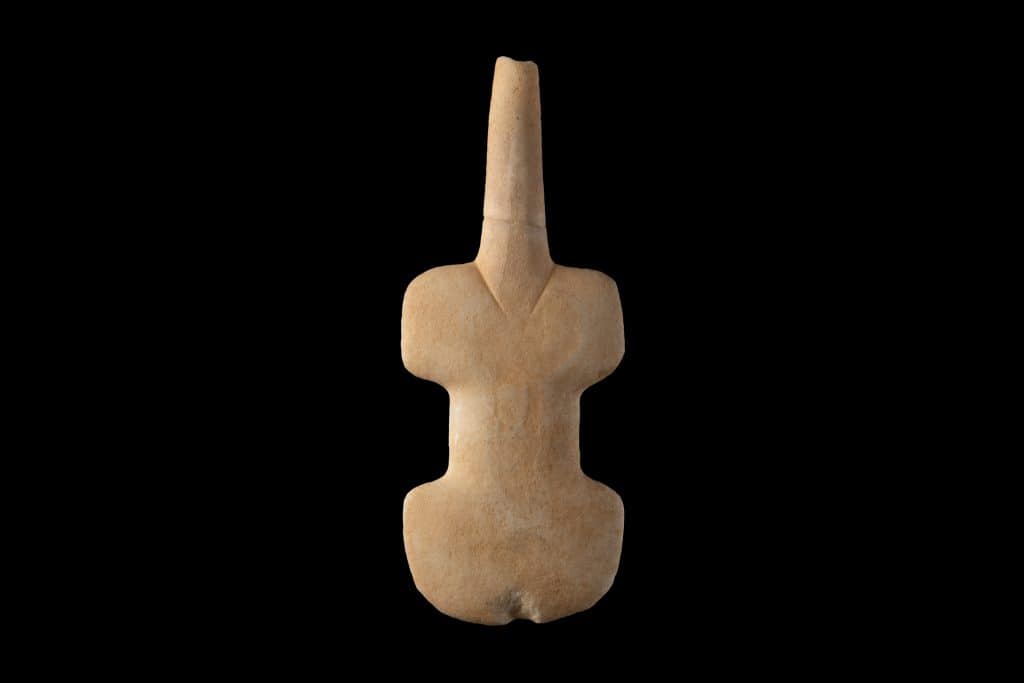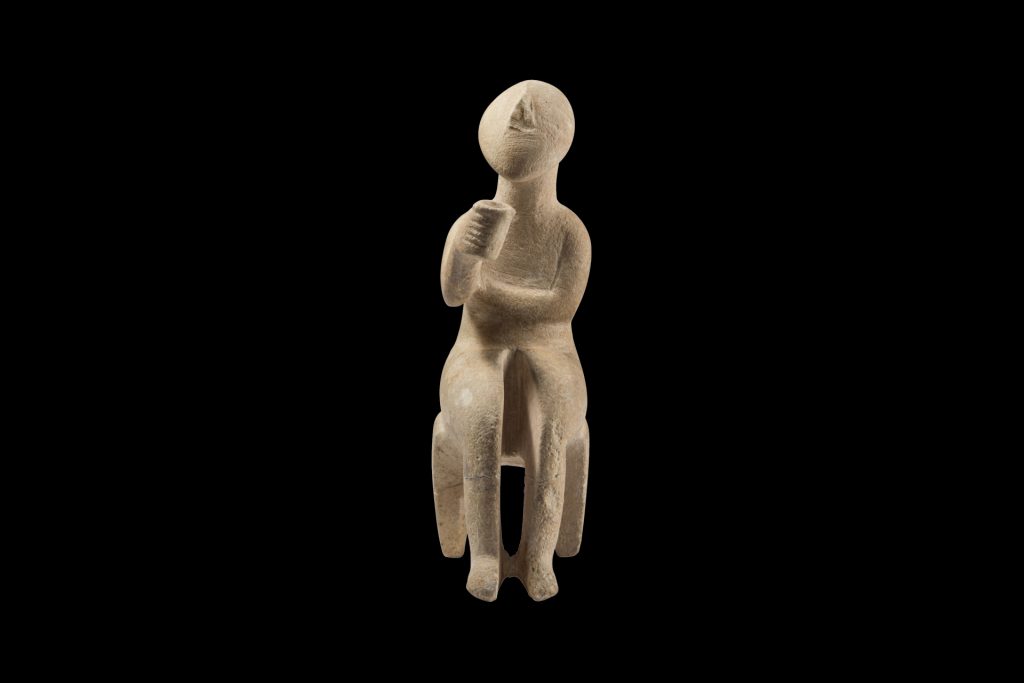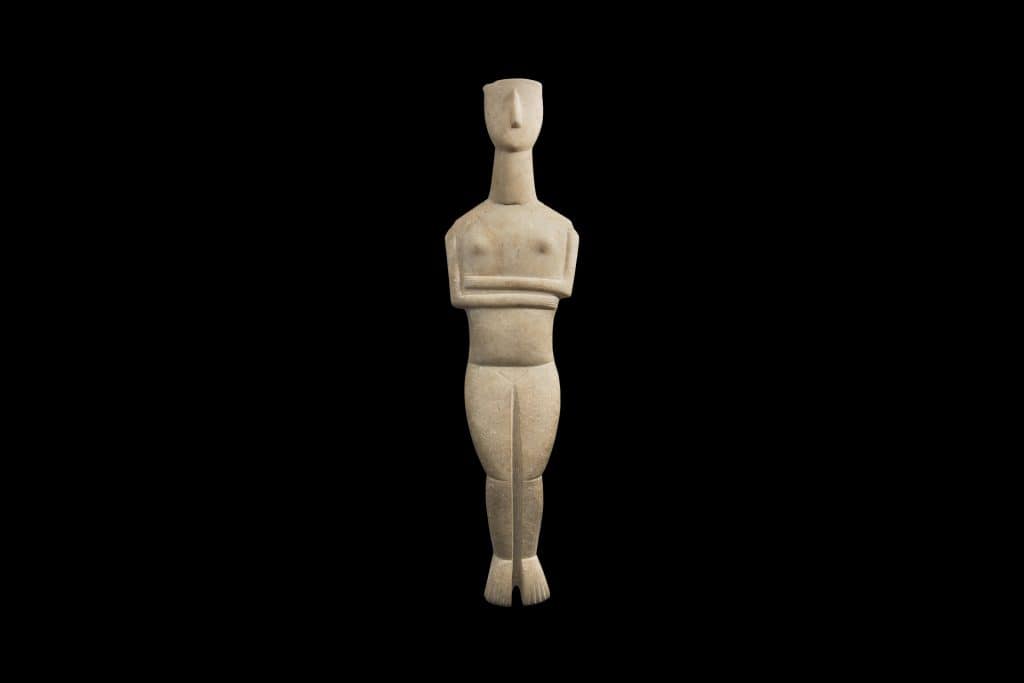Hunter/warrior figurine
OBJECTS 360°
DESCRIPTION
By the end of the Early Cycladic II period (2700-2400/2300 BC) sculptors distanced themselves from the canons and conventions that had prevailed for five hundred years in Cycladic art. The figurines of this final phase–late examples of the “Chalandriani variety” (so named after the extensive cemetery on Syros) and of the canonical type in general–have been dubbed “post-canonical” and are characterized by marked schematization and the perfunctory treatment of individual anatomical details.
The canonical arrangement of the arms (left over right) no longer exists and the position is sometimes reversed, as in the certain example (right over left) or the arms are confronted or obliquely placed. The head is rendered as a triangular plaque on the neck, while the legs are disproportionately short and straight, with rudimentary formation of the feet. In some cases, features on the head are incised or modeled in relief.
Most “post-canonical” figurines represent females, although some males also exist. With the exception of one example in lead, they are all of marble and range in height from 7 to 36 cm. Another ten hunter or warrior figurines are known.
On most of them the baldric hangs from the right shoulder. Some also feature a dagger, belt and codpiece, usually carved in relief. Hunter/warrior figurines are dated to the end of the Early Cycladic II period (2700-2400/2300 BC). Some scholars have linked their appearance with the upheavals observed in the Aegean region in this period, which were accompanied by violent destructions and the capture or abandonment of a significant number of settlements in the Aegean and Asia Minor.
MORE

OBJECTS 360°
Violin-shaped figurine

OBJECTS 360°
Marble figurine, the “Cup-bearer”

Μαρμάρινο ειδώλιο (Σπεδού)